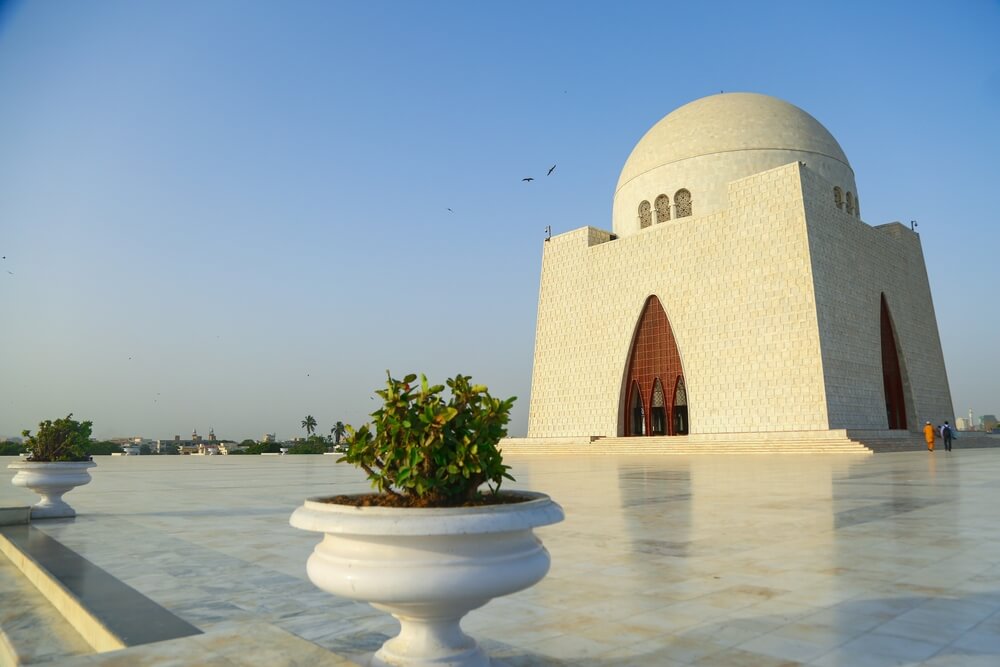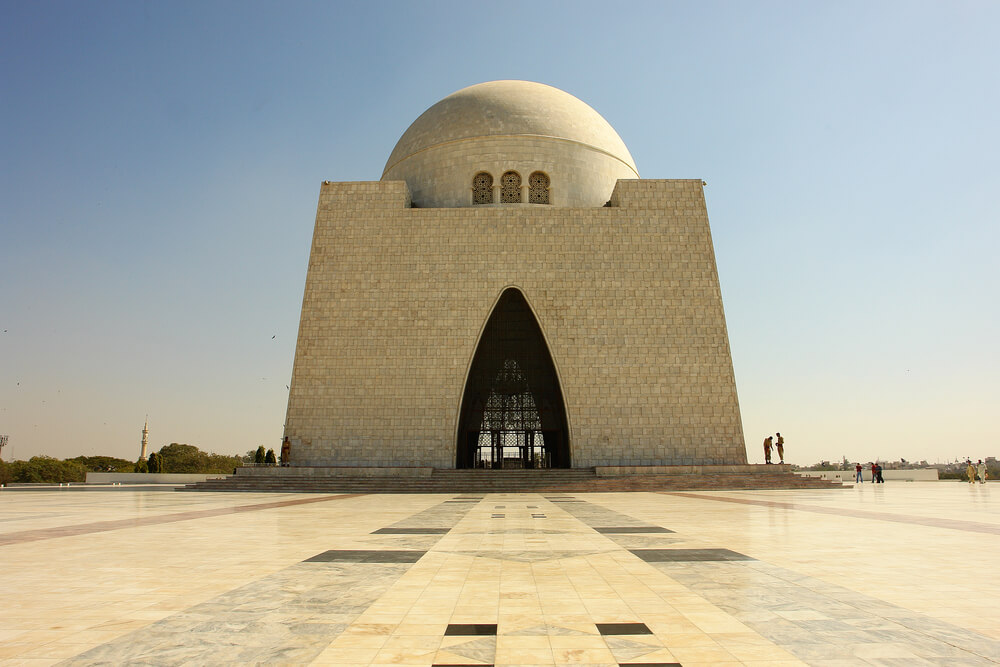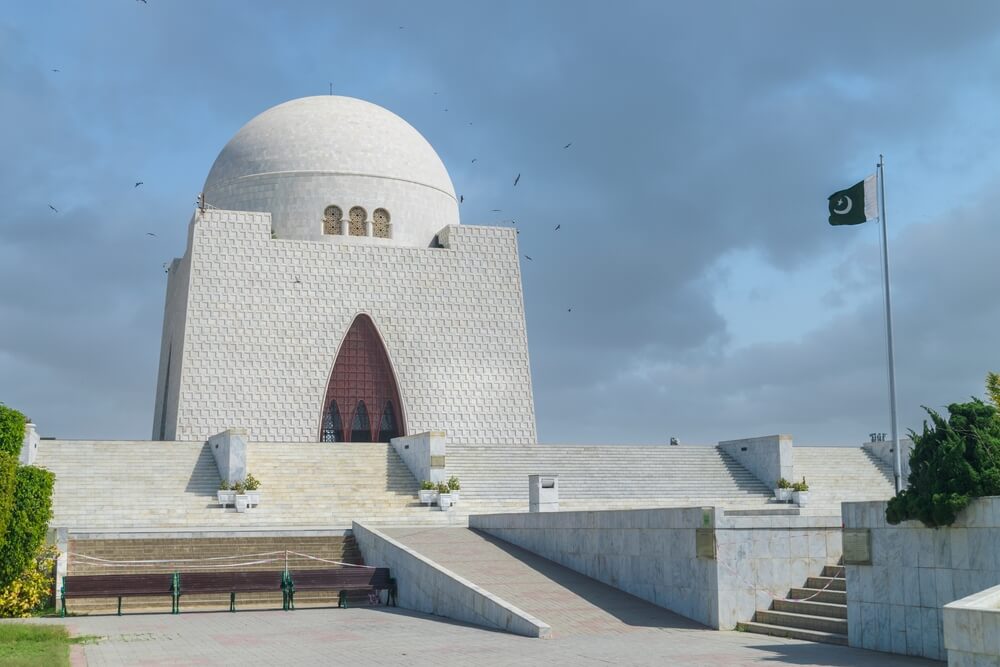Mazar e Quaid Karachi
Overview & Importance of Mazar-e-Quaid
The Mazaar-e- Quaid Jinnah Mausoleum, also known as the Quaid-e-Azam Mazar or the National Mausoleum, is the final resting place of Muhammad Ali Jinnah, the founder of Pakistan. It is one of the most historic and significant landmarks in the country. It was built as a tribute to the founder of Pakistan for his undying efforts in gaining independence for Pakistan.
Quaid-e-Azam Mazar is one of Karachi’s most popular tourist destinations. This beautiful mausoleum holds tremendous significance for Pakistanis, as it is the final resting place of our Nation’s founder, Muhammad Ali Jinnah. The architecture and design of the tomb are stunning and draw visitors from all over the world. If you’re looking for patriotism and history, visit Mazar-e-Quaid during your next trip to Karachi.
Quaid e Azam Muhammad Ali Jinnah died shortly after Pakistan’s independence in 1948. A year later, the government established the Quaid-e-Azam Memorial Fund (QMF) to build a memorial in his honor. The National Mausoleum was designed by the architect Yahya Merchant and completed in 1971. Several designs were shortlisted, and Ms. Fatima Jinnah Picked and selected the current design.
Interesting Facts About Mazar-e-Quaid
· The tomb of Jinnah is made of marble and is situated on a raised platform surrounded by a lush garden.
· The Jinnah Mausoleum is 75×75 meter on ground.
· The Building is 43 meters high on the ground.
· It attracts up to 10 thousand visitors every year.
· On three sides of the mausoleum are porticos that serve as the entrance
· The construction of the Tomb of Quaid e Azam started in 1960 and was completed in 1971.
· The total area of the Tomb of Jinnah spreads over 61 acres.
· Yahya Merchant designed the tomb.
History of Mazar-e-Quaid
The Tomb of Jinnah, also known as the Jinnah Mausoleum or the National Mausoleum, is the final resting place of Muhammad Ali Jinnah, the founder of Pakistan. The monument’s design has been attributed to the popular modernist style of the 1960s. It is a symbolic representation of the city.

At a glance, the monument may appear quite simple, but an up-close view reveals the detailed and elaborate design of the tomb. These attributes of the tomb are said to represent Jinnah’s personality. Clad in white marble, the tomb is set on an elevated 54-square-meter platform. The tomb boasts an immaculate dome, while the interior is set with a four-tiered chandelier that China gifted.
Architecture of Mazar-e-Quaid
The whole interior and exterior of the Tomb of Quaid e Azam are adorned with white marble. The dome is made of copper latticework, clearly visible at stunning arched entrances on all four sides of the Jinnah Mausoleum. The wood used in the architecture was brought from Kashmir. All the materials used were made in Pakistan.
Huge gardens and fifteen fountains surround the mausoleum. The gardens have pavement for walking. Many people visit Mazar e, Quaid, daily and spend most of their time outdoors.
The monument’s unique design has been considered a traditional monument of the modern era. The overall design will pay tribute to Mr. Jinnah, symbolizing Jinnah and his life. The white marble represents his purity, honesty, loyalty to his country, and goodwill, while the arched dome and geometric forms portray him as a larger-than-life figure.
Inside the Mazar-e-Quaid
The bazaar e Quaid is a beautiful and imposing structure built to honor the founder of Pakistan, Quaid-e-Azam Muhammad Ali Jinnah. The mausoleum is square in plan with gently tapering walls constructed from pristine white marble. While marble is a more common material choice for monumental works of architecture, the material was chosen to mitigate the extreme climatic conditions characteristic of the region. Once you enter the Tomb of Jinnah, the casket lies in the very center of the Building. It is well secured in a chamber, with five colossal sarcophagi made of white marble.
The mausoleum has four more graves: Liaquat Ali Khan, Ms. Fatima Jinnah, Nurul Amin and Sardar Abdur Rab.
Comprehensive history
Muhammad Ali Jinnah’s eventual demise occurred in 1948, and his last resting place was set apart by a vast white marble piece raised on a plinth with additional marble steps. In 1949, the Quaid-e-Azam Memorial Fund was laid out, which got various ideas for the foundation of dedication: a proper monument in Jinnah’s honor. By 1952, his catacomb was covered by a little vault, with a bureau that contained a portion of his belongings along a wall close to his grave. The site had a quality of disregard that caused resentment in many. Fatima Jinnah and the QMF got various letters from concerned Pakistanis about the miserable condition of his burial chamber, which subsequently made way for more honorable actions to erect a more deserving monument for such a personality.

In 1952, the QMF proposed to raise four landmarks across Pakistan to Jinnah’s memory – a grave and mosque on the ongoing site in focal Karachi, a Dar-ul-Uloom religious school in Punjab, and a University of Science and Technology in East Pakistan.
In 1954, an Indian draftsman was chosen to plan the catacomb, yet unfortunately, it was later dismissed. In 1955, a Turkish engineer was employed, but his arrangement was rejected.
In 1957, the Government of Pakistan proposed another plan to construct another sepulcher for Jinnah. This plan was part of a competition on an international scale, which compared the tombs and monuments made by artists worldwide. Great Britain won the competition through an artist known as William Whitfield. The state’s endeavors to choose a plan were matched by Jinnah’s sister, Fatima Jinnah, who sought support and views from the general population in the landmark plan for her brother. Fatima Jinnah rejected the 1957 proposition and took command of the QMF. She then dispatched engineer Yahya Merchant, a Bombay-based planner who was a close companion of Jinnah, to lay out the plan for the landmark as it is known today. President Ayub Khan established the groundwork stone for the milestone on July 31, 1960. Yahya Khan initiated it on January 18, 1971. The nurseries encompassing the catacomb were finished on December 24, 2000.
Mazar-e-Quaid Significance
The Jinnah Mausoleum holds an important place in the heart of every Pakistani, and everyone offers enormous respect to the founder of the Nation. He was the most loved leader of Pakistan, and the people of Pakistan still followed his guidance. It also holds significant symbolic importance for the city of Karachi. The glowing tomb is a sight and can be seen for miles at night. The national mausoleum is so particular that all city’s main thoroughfares should connect here. The Tomb of Jinnah was almost at the end of the old town, but now it occupies a central place with the increasing growth of the city and its outskirts.
The tomb of Jinnah has a ceremonial significance as Military ceremonies take place on Mausoleum grounds on Independence day, Pakistan day, and Quaid e Azam’s birthday, December 25, every year.
Attractions at Mazar-e-Quaid
The national mausoleum is essential, and it gains tourists from all over the world. Many tourists’ favorite spots are near the Quaid e Azam Mazar, the perfect add-on to your day trip. Jinnah Park is near the tomb, the ideal location to hang out and spend a lazy evening. There are many fast food places and restaurants around the area where you can enjoy food after visiting the Tomb of Jinnah.
Ticket Price
The ticket price to enter the Quaid e Azam Mazar is 700 rupees per head; for children between the ages of three to twelve (3-12), it is 600 rupees per child. You can purchase the tickets online or at the ticket counter. Children below three years of age can enter for free.

Mazar-e-Quaid Timings:
The Mazar-e- Quaid is open to the general public from Friday to Tuesday from 10:00 AM to 5:30 PM. On Wednesday and Thursday, the timings vary from 2:00 PM to 5:30 PM. Please check the timing before starting your trip. The timings change on special occasions such as independence day or any ceremonial events.
Location :
The National Mausoleum is located on M.A. Jinnah Road and close to The Dawood Foundation (TDF) Ghar and Cosmopolitan Society. It can be seen from far due to its central location and structure.
FAQs
Would you like to book in advance to visit Mazar-E-Quaid?
You can get tickets online, and it is better to book in advance to avoid any hassle.
What attractions are near Mazar-E-Quaid?
Mazar e Quaid is located near TDF Ghar and many famous restaurants, Jinnah Park being the closest. Please feel free to go ahead and plan your whole day trip accordingly. Many attractions are not far from the tomb of Jinnah.
What is Mazar-e-Quaid famous for?
It is famous because it is the resting place of the founder of Pakistan. It is also a symbol of identity and pride for the Karachi city as Karachi was the home of Mr. Jinnah.
Where is the tomb of Jinnah?
The Tomb of Jinnah is located in Karachi on M.A. Jinnah Road.
Why was Mazar-e-Quaid built?
Quaid-e-Azam Memorial Fund (QMF) built the memorial in his honor. The National Mausoleum was designed by the architect Yahya Merchant and completed in 1971.
